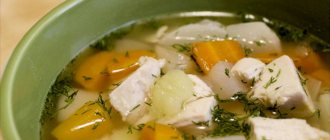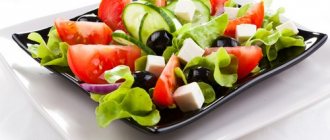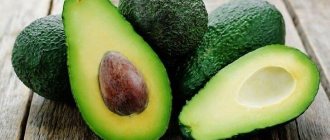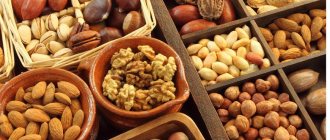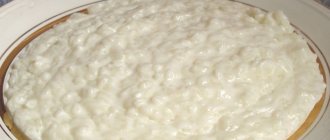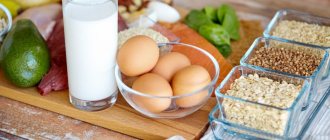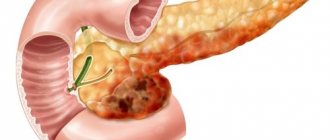For any pathologies in the gastrointestinal tract, you need to be more careful about your diet, since many foods that are usually beneficial to the body can negatively affect digestion. Cabbage for pancreatitis, as well as dishes prepared from it, are foods that can in some cases cause harm. Patients with pancreatitis are forced to reconsider their daily diet and exclude many foods from it, and each of them is interested in which vegetables and in what form are allowed to be consumed with this disease.
Is it possible or not?
There is an opinion that in case of pancreatitis it is necessary to completely abandon all varieties of cabbage, which is not entirely true. This vegetable, useful in all respects, has several types, many of which are recommended for inflammation of the pancreas, while others are prohibited. Also, the possibility of using cabbage for preparing dishes for patients with pancreatitis largely depends on the methods of preparing this vegetable, which must be taken into account.
From a medical point of view, it is impossible to come to a consensus and unequivocally answer the question - is it possible to eat cabbage when suffering from pancreatitis, or should patients with such a diagnosis forever forget the taste of borscht, cabbage soup made from fresh or sauerkraut, as well as other popular and favorite dishes. You should know that, in addition to the familiar white cabbage, there are many types of cabbage, each of which has its own taste and beneficial properties. Varieties such as Brussels sprouts, cauliflower, kohlrabi, Peking sprouts, and red cabbage are no less useful and loved. Many of them, as dishes prepared correctly, will be useful for pancreatitis, as they are rich in vitamins and contain minerals necessary for the body.
Varieties
Next, we will analyze in detail the possibility of consuming various types of cabbage for pancreatitis or cholecystitis.
Colored
It contains softer fiber than cabbage, so it is not contraindicated for these diseases. It is better to eat cauliflower stewed or boiled to minimize the load on the pancreas.
Brussels
Brussels sprouts have a positive effect on the pancreas and gastrointestinal mucosa and soothe irritated tissues of the digestive system. Thanks to this effect, you can safely eat it.
Broccoli
Broccoli is a very healthy vegetable, having a good effect on the pancreas and gallbladder.
Important! Broccoli should be stewed or boiled before eating.
Beijing
Chinese cabbage contains a large amount of indigestible dietary fiber , so it is not recommended to use it for gastrointestinal diseases, especially during exacerbations.
Benefit or harm
No one will argue that cabbage as a food product will be useful for a healthy body, and what varieties of this vegetable to use does not play a big role. But in the case of pancreatitis, when inflammation of the pancreas occurs, poor nutrition can cause an exacerbation of the disease and significantly worsen the well-being of patients. Patients with this pathology suffer from insufficient pancreatic function, which can result in diabetes mellitus.
When treating pancreatitis, especially exacerbations of this disease, it is necessary to adhere to many restrictions and make changes to your usual lifestyle, including diet. Only fresh white cabbage is completely prohibited, and dishes made from it, like other varieties of this vegetable, remain approved by gastroenterologists.
Features of introducing different varieties of vegetables into the diet
Cabbage is one of the most popular vegetables in human nutrition. It is used to prepare salads, first courses, and is also consumed fried and stewed. It goes well with meat and other vegetables, and is used as a filling for pies and other baked goods.
So, is it possible to eat stewed cabbage if you have pancreatitis? Nutritionists say that with this pathology it can only be baked or stewed, and if there have been no relapses for a long time. With this heat treatment, all its irritating properties are softened. But still, it should be present in the food menu within reasonable limits; it is advisable to give preference to young cabbage rather than tough and spoiled cabbage.
Cabbage is not only tasty, but also healthy, so many patients who have been diagnosed with pancreatitis would like to know whether it can be eaten and in what form?
- Be sure to stew the white cabbage, and add other vegetables to it, for example, zucchini, carrots, and herbs.
- Chinese cabbage is useful, but it is better to eat it fresh, and during a relapse of the disease, it is temporarily removed from the menu.
- Seaweed (kelp) is the safest and healthiest for a sick pancreas, as it contains a lot of iodine, nickel and cobalt, which have a positive effect on the functions of the gland. With a deficiency of these microelements, diabetes mellitus can develop.
- Stewed cauliflower for pancreatitis is the best option, since its fiber has a soft structure and does not show aggression towards the gland; it can also be eaten boiled.
- Broccoli contains many vitamins and microelements. For patients with a problem organ, this vegetable should be eaten stewed, boiled or baked.
- Brussels sprouts are superior in properties to white cabbage. Helps relieve inflammation and symptoms of mucosal irritation.
Stewed cabbage for chronic pancreatitis helps to diversify the treatment table, but be sure to follow the measure and technology of preparing the dish.
It should be said that not everything is so simple regarding this vegetable, since it can provoke:
- Increased secretion of the pancreas, which can lead to exacerbation of pancreatitis.
- Bloating and flatulence in the intestines due to the high fiber content.
- Increased stomach acidity.
However, only sauerkraut and raw cabbage exhibit such properties, therefore, in these variations of its presence, it is strictly prohibited in case of inflammation of the pancreas, even in the phase of subsidence of clinical signs.
Sauerkraut for pancreatitis
As for sauerkraut, it can also be included in your diet, but not as a daily dish, during periods of stable long-term remission, stewed or boiled and not in large quantities, one serving should not exceed one hundred grams per day. Cabbage leaves that are intended to be used for food should not be hard and rough; it is better to choose young and tender leaves from the middle of the head of cabbage.
The nutritional benefit of sauerkraut for inflammation of the pancreas lies in the increase in lactic acid in it after fermentation. Thanks to this quality, favorable conditions are created in the human intestine for the life of beneficial microflora.
Seaweed for pancreatitis
Sea kale only conventionally bears this name; this sea plant has nothing to do with the cruciferous family. However, the beneficial substances contained in it and which are necessary for the health of the pancreas make this product simply irreplaceable. Of course, the presence of essential oils in seaweed can irritate the intestinal and gastric mucosa, which will certainly affect the condition of the pancreas. But, when stewing or during cooking, they are completely destroyed, but useful microelements in the form of nickel and cobalt, contained in seaweed in huge quantities, do not suffer when cooked by any means and are completely preserved.
It follows from this that properly steamed or boiled seaweed is recommended to be eaten not only during periods of remission, but also during exacerbations, and to do this constantly, but in small portions. The beneficial properties of this cabbage are explained by its composition, namely:
- Iodine, calcium, nickel and magnesium;
- Manganese, cobalt and iron;
- Phosphorus, sodium and potassium;
- Vitamins A, C, PP, group B;
- Beta-carotenes.
It is the content of trace elements in the form of potassium and nickel that are necessary for the health of the pancreas and contribute to its restoration.
Is it possible
Cabbage is a vegetable that contains a large amount of vitamins and has high nutritional properties. However, not every type is suitable for disorders of the digestive system, especially for pancreatitis and cholecystopancreatitis.
Beijing
In its fresh form, Chinese cabbage can stimulate the secretion of gastric and pancreatic juices, therefore, during an exacerbation, it is not recommended to eat it either fresh or thermally processed. Despite the fact that the leaves of this vegetable are tender and contain large quantities of ascorbic, citric acid and vitamin A, they should not be eaten in case of acute pancreatitis.
You can include Chinese cabbage in your diet only 2 weeks after the attack. At this stage of the disease, the succulent leaves will no longer injure or irritate diseased organs and will saturate the body with vitamins.
Colored
Cauliflower removes toxins from the body, prevents constipation, and activates metabolic processes, however, in case of pancreatitis, it can be eaten in small quantities and only after heat treatment.
Doctors believe that the vegetable, as an independent dish, can cause bloating and increased gas production. Therefore, it is recommended to eat it in complex dishes with other vegetables. At the same time, you should not fry or stew cauliflower, but it is better to steam it - this way more nutrients are retained.
The total amount of product should not exceed 100 g per day.
Broccoli
This type of cabbage contains a sufficient amount of phosphorus, potassium and calcium, copper, iron and iodine, which have a beneficial effect on health in case of pancreatitis.
The vegetable has a low fiber content, so it does not irritate the digestive organs.
100 g of broccoli contains the daily requirement of vitamins C and K. Due to its properties, it is indicated for dietary nutrition in boiled or stewed form.
Marine
Seaweed (kelp) is rich in iodine, helps reduce cholesterol, remove waste and toxins from the body, and improves immunity. In the chronic stage, when the patient has no obvious complaints about the pancreas, this type of cabbage can be eaten in salads, added to soups, and cooked as boiled and stewed side dishes. It is important to use frozen or dried kelp for food, not factory canned food.
In case of acute illness, it is better to avoid seaweed, as it can cause colic and diarrhea.
In case of acute illness, it is better to avoid seaweed, as it can cause colic and diarrhea.
Savoy
This type of cabbage is little known in our country, but healthy people should definitely include it in their diet. Another thing is with pancreatitis. Despite the benefits of this vegetable - low calorie content, the ability to protect the body from carcinogens and stabilize the nervous system, it is not suitable for dietary nutrition.
White cabbage
The most popular vegetable, but practically unsuitable for feeding patients with pancreatitis.
Sour white cabbage is completely prohibited in the diet, as it contributes not only to the exacerbation of the disease, but also to irritation and destruction of the mucous membrane.
High acidity and high salt content are factors that prevent you from eating sauerkraut with this disease.
Fresh cabbage is rich in coarse fiber, which is poorly digested and causes nausea, bloating, and persistent diarrhea. It is recommended to combine it with other boiled vegetables in a volume of no more than 70 g.
Red cabbage
Doctors believe that this type of cabbage is undesirable in the diet of patients with pancreatitis, because coarse fibers strongly irritate the mucous membrane of the affected organs, causing bloating, discomfort and indigestion.
Therefore, it is better not to consume this vegetable either fresh or processed.
Doctors believe that red cabbage is undesirable in the diet of patients with pancreatitis.
Kohlrabi
Kohlrabi is not the most popular type of cabbage, despite its benefits: it is rich in vegetable protein, mineral salts, and fiber. But with pancreatitis, it is not recommended to eat it, especially during an exacerbation.
During the remission stage, you can eat a limited amount of vegetables, boiled and pureed. At the first sign of dyspepsia, such food should be abandoned.
Brussels
This type of cabbage can lower cholesterol levels, normalize intestinal motility, and stabilize blood sugar levels. The leaves contain a large amount of protein, which makes Brussels sprouts a valuable food product.
Brussels sprouts can lower cholesterol levels, normalize intestinal motility, and stabilize blood sugar levels.
However, in the acute stage, it is not recommended to eat it. You can include mashed boiled leaves in your diet 1 month after the onset of the disease. Starting with 1-2 tbsp. l., you can gradually increase to the daily norm of 100-150 g.
If abdominal pain and bloating appear after consumption, Brussels sprouts should be excluded.
Brussels sprouts
A vegetable such as Brussels sprouts allows you to solve several problems that arise in patients with pancreatitis:
- Helps normalize the functions of the digestive system;
- Increases the body's immune defense;
- Helps fight high blood pressure and help reduce it;
- Relieves the symptoms of atherosclerosis;
- Eliminates changes in the state of the cardiovascular system, such as arrhythmia and coronary insufficiency.
Eating dishes from this vegetable plant has a beneficial effect not only on the pancreas, helping to eliminate inflammation in it, but will also be beneficial for the entire digestive system.
What harm can sauerkraut do?
One of the most common and beloved dishes by many is sauerkraut. It contains many vitamins, minerals, as well as bacteria and organic acids that accumulate during fermentation during sauerkraut, providing its specific sour taste.
For pancreatitis, sauerkraut is completely prohibited (for any pathology - both acute and chronic), because it has a negative effect on the condition of the pancreas due to its following effects:
- Irritant effect of acids on the mucous epithelium of the stomach and intestines.
- Increased gastrointestinal motility, spasms of the stomach and intestines, which causes abdominal pain, nausea, vomiting, excessive gas formation, and intestinal upset.
- Fluid retention due to the large amount of salt in sauerkraut. Excess water causes swelling throughout the body. Swelling of the pancreatic tissue increases the pain syndrome and prevents the inflammatory process from subsiding.
Sauerkraut juice
During pancreatitis, it is possible, even recommended, to drink sauerkraut juice. To obtain a useful product, it must be fermented in a certain way according to a special recipe: salt should be taken much less than with ordinary fermentation, about 1 tablespoon per 1 kg of shredded cabbage (1 kg is about half a head of cabbage). The product is prepared without the use of other vegetables (carrots, onions, spices, other seasonings).
Cabbage juice contains many vitamins (C, PP, E, group B), microelements (iodine, sulfur, zinc and others), as well as pancreatin - a substance similar to a pancreatic enzyme. This composition of cabbage brine benefits the body, providing the following effects:
White cabbage for pancreatitis
Cabbage such as white cabbage must be excluded from your diet for a long time, for the very reason that it contains fiber, and a lot of it, which is difficult for the body to absorb. To process fiber, a high content of certain gastric enzymes is necessary, and these are precisely what is lacking in patients with pancreatitis. That is why the consumption of white cabbage by such patients can cause serious problems in the intestines with the manifestation of flatulence, dyspepsia, bloating and increased stomach acidity, and in the future threatens to worsen the underlying disease and all its accompanying pathologies.
Stewed cabbage for pancreatitis
All restrictions mainly apply to raw white cabbage; patients with inflammation of the pancreas are prohibited from eating it. This applies not only to moments of exacerbation, but also to periods of remission and even after all symptoms of the disease have been eliminated. Fresh cabbage juice increases acidity in the stomach and also increases the activity of secretory ability in the pancreas, which is unnecessary irritation for the inflamed organ and will negatively affect its condition.
As already mentioned, the high fiber content in this vegetable due to a lack of enzymes also serves as a categorical ban on consumption.
Therefore, white cabbage prepared by stewing, baked, or in ready-made soups can be used in the menu of patients with pancreatitis, but it is infrequent and it is better to do this during periods of prolonged remission. When cooking, it is not recommended to use a lot of oil; in order to avoid unnecessary stress on the gland, cabbage with the addition of carrots or zucchini will bring even greater benefits.
The best recipes for inflammatory processes in remission
We offer several versions of preparing stews from different varieties of vegetables.
Classic recipe from cabbage variety
- Rinse in clean water.
- Remove the upper hard and tough leaves and stalks.
- Cut the head of cabbage into large pieces and finely chop.
- Place the chopped vegetable in a saucepan, add coarsely grated carrots and finely chopped onion.
- Pour in a little water and vegetable oil.
- Simmer until soft, stirring occasionally.
- 30 minutes before readiness, add a drop of tomato paste.
To make the dish more filling, you can add lean meat options, such as chicken, veal, turkey, and so on.
White cabbage variety in milk
This recipe allows you to prepare a tasty and nutritious meal:
- Take some cabbage and chop finely.
- Simmer the vegetable in a small amount of water with the addition of vegetable or butter and minimal salt for 10 minutes.
- Then add 0.5 cups of milk (low fat or diluted with water) and cook until soft.
This dish, due to the presence of milk, has a delicate and soft structure, thereby not loading the gland during digestion.
Cauliflower dish
This type of vegetable cooks much faster due to its delicate structure. Prepared in the following order:
- Disassemble the head of cabbage into inflorescences.
- Bring the water to a boil, add a little salt and immerse the prepared pieces in boiling water for about 5 minutes.
- Then put in a frying pan and add grated carrots. It is not necessary to add onions.
- Pour in a little water and oil, cover the dish with a lid.
- Simmer over low heat.
If you are sick, you can eat cauliflower every day.
Braised Chinese cabbage
Dishes made from this cabbage are allowed only with stable remission. To prepare it, you need:
- Chop the cabbage leaves as finely as possible.
- Do not add spices, and salt should be present in minimal quantities.
- Place in a saucepan, add a little water and a drop of oil and simmer until done. You can add carrots or zucchini.
- A few minutes before readiness, add the greens.
Very tasty Beijing stew with the addition of rice or apple.
Brussels sprouts dish
If the disease worsens, it is better to avoid eating this cabbage. The peculiarities of its extinguishing consist in the following stages:
- Finely chop the main ingredient, grate the carrots.
- Place in a saucepan
- Add finely chopped onion (optional).
- Add a little vegetable oil, a little salt.
- Simmer for 20 minutes until soft.
Serve as a separate dish or with a piece of meat.
How to cook kelp
Regarding seaweed, it is prepared as follows:
- Wash fresh seaweed, drain and cut into pieces 10 cm long.
- Then place in a saucepan, add cold water and cook for 10 minutes.
- In this case, after 5 minutes from the moment of boiling, the water must be drained and fresh water added, then cook for another 5 minutes.
- Then remove from heat and rinse in cold water.
Cut like noodles and use for other dishes.
Cauliflower for pancreatitis
Cauliflower is well known to buyers; it is characterized by its low calorie content, delicate structure, minimal fiber content and excellent taste. When preparing this vegetable, you do not need any seasonings or spices; just boil it, add a small amount of oil, and a tasty and healthy dish is ready.
Thanks to its properties, cauliflower, which has managed to firmly settle in kitchens and makes the daily menu more varied, increases digestive activity, eliminates constipation, normalizes the acid level of gastric juice, takes part in the synthesis of substances beneficial to health, neutralizes waste and toxins and promotes their elimination from the body. . It contains a large amount of plant proteins, vitamins C, U and group B, the lack of which negatively affects health. In order not to waste nutrients and not weaken their beneficial effects on the gastrointestinal tract, it is not recommended to use long-term heat cooking methods; it is better to eat cabbage boiled or stewed.
Chemical composition
There are many varieties of this vegetable, and each type has its own chemical composition.
Reference! The main components are various carbohydrates: polysaccharides (fiber, pectin) and monosaccharides (glucose, fructose, sucrose), carotenoids, glycosides and thioglycosides.
Cabbage also contains a large amount of vitamins:
- ascorbic acid (vitamin C);
- vitamins B1, B2;
- folic and nicotinic acid;
- vitamin H, K and tocopherols.
Cabbage is rich in macro- and microelements, sodium, potassium, calcium, magnesium and iron salts . It contains many essential amino acids. This composition, as well as its low cost, availability and ease of preparation, make cabbage an indispensable food product.
Chinese cabbage for pancreatitis
This variety of cabbage is distinguished by soft and delicate fiber, so during periods of remission with pancreatitis it can be eaten with virtually no restrictions. In case of exacerbations, you should still abstain from it, despite the rich content in the form of pectin substances, carbohydrates, proteins and vitamins B and PP. It is consumed as ready-made dishes, along with carrots, zucchini and herbs. Thanks to this content, these vegetables serve as support for the pancreas and prevent the development of a pathology associated with inflammation of this organ, such as diabetes.
Which one is acceptable to use?
Let's consider whether cabbage can be eaten in each individual case.
For cholecystitis
It is necessary to refuse white cabbage in any form: fresh, pickled, stewed . Consumption of other types is possible only in small quantities and only during the period of remission, since the substances contained in the vegetable negatively affect the exchange of bile.
For pancreatitis
Raw or sauerkraut has a detrimental effect on the pancreas, especially during the “acute” period of pancreatitis. This effect is caused by the damaging effects of essential oils on the pancreas.
You may be interested in reading the advice of doctors and nutritionists on eating cabbage for diabetes and in what form it is best to eat for gastritis.
Broccoli
Eating this cabbage often contributes to the appearance of colic, leads to stool disorders in the form of diarrhea and is accompanied by bloating. Therefore, during an exacerbation of pancreatitis, it is better to refrain from consuming it and introduce it into food after potatoes and zucchini. Broccoli can be eaten in the form of casseroles, combined with omelettes, added to vegetable puree soups, made into puddings and served chopped as a side dish. Broccoli contains a large number of various vitamins, minerals, and most importantly, this vegetable is rich in vegetable protein, which is essential when restoring damage to the pancreas. The presence of chlorophyll increases the stability of the cell membranes of the gland and protects cells from the destructive effects of pancreatic enzymes.
The daily dose of broccoli is up to 200 g per day.
Contraindications
White cabbage has particular contraindications for use in food for inflammation of the pancreas. Gastroenterologists are more favorable towards other varieties of this vegetable; some of them are allowed to be eaten even during exacerbations, and only the consumption of white cabbage is subject to strict restrictions. What are the contraindications for this and other varieties of cabbage?
- Any type of cabbage, and especially the white variety, greatly increases the secretory ability of the digestive glands, in particular the pancreas, which can easily provoke an exacerbation or the development of complications.
- The large amount of fiber contained in some types of cabbage is difficult to digest, and since pancreatitis requires a lack of enzymes necessary for digestion, undigested food accumulates in the stomach with the further development of flatulence and bloating.
- Cabbage juice has the ability to increase the acidity of the stomach, as a result, this negatively affects the stomach itself and the condition of the pancreas.
All this is more related to fresh white cabbage, since this particular form is contraindicated during periods of remission, not to mention during periods of exacerbation. But when prepared correctly, in the form of stewed or boiled, it can be eaten by those who have a persistent period of calm with no exacerbations. There are no contraindications in this case, but in everything you need to adhere to measures. It is better to prepare dishes from young cabbage and eat it in small portions.
Recipe
If you don’t want to give up white cabbage, then it’s better to eat it stewed . For preparation:
Take a small head of cabbage (1-1.5 kg), chop into strips.- Grease a preheated deep frying pan with sunflower oil.
- Place the cabbage in the pan and lightly fry it until softened.
- After this, add 1-2 tablespoons of tomato paste, add water and simmer over medium heat until tender.
- Add salt to taste.
Any dish, including cabbage, for chronic pancreatitis and cholecystitis should be included in the menu in small portions . In case of exacerbation of diseases, you should not consume vegetables in any form. After eating cabbage, carefully monitor your illness and consult a doctor at the first sign of exacerbation.
Healthy recipes for cooking cabbage
The benefits of cabbage for any diseases of the digestive system or pancreatitis largely depend on the method of its preparation. Gastroenterologists advise their patients to adhere to the following time-tested recipes when preparing dishes from various varieties of this vegetable.
- The healthiest way to eat cabbage is as a stew. For this purpose, the head of cabbage, cleared of the upper coarse leaves, is cut into small strips, removing all thickened and hard parts, after which they begin to stew without preliminary frying. Oil is added to a minimum, and you can add a more pleasant taste to the finished dish with the help of carrots and zucchini, which are stewed together with cabbage. It is better not to over-salt the dish and not to use irritating herbs and spices in it, as this is contraindicated for diseases of the pancreas.
- Patients with pancreatitis can safely eat steamed cabbage, using a special pan for this purpose - a steamer. You can find other methods of cooking using this method, the main thing is that the cabbage is soft and does not contain hard parts. Serve it ready-made with sour cream or topped with melted butter.
- Cabbage can be eaten as ready-made pureed soups, where it goes well with other vegetables and herbs. The broth should not be made from fatty meat; it is good if poultry or lean veal is used in this capacity.
Traditional recipe for stewed cabbage.
- Fresh vegetables must be washed under running water.
- It is better to remove the top leaves, they are the toughest.
- Next, the head of cabbage is cut into quarters and finely chopped.
- The hard core is not edible and is discarded.
- The finely chopped product is placed in a pan, carrots grated on a coarse grater and finely chopped onions are added there.
- Do not forget that during heat treatment the vegetable shrinks and releases juice.
- Next, add a little water and sunflower oil to the pan.
- To prevent the dish from burning, it must be stirred periodically. Half an hour before the end of cooking, tomato paste is added to the vegetables.
- In order not to go beyond the dietary limits, add just a little pasta.
Stewed cabbage goes well with meat or other vegetables. To make the dish more satisfying, you can add lean meats - chicken breast, turkey, veal. The vegetable also goes well with zucchini or pumpkin.
Opinion of doctors and nutritionists
Gastroenterologists and nutritionists assure that the diet of patients with pancreatitis should be as varied as possible. An organism with such a disease, like no other, needs to be replenished with vitamins and nutrients necessary for a full existence. Therefore, such a healthy vegetable as cabbage cannot be completely ignored. It is necessary to eat a wide variety of its types, since many dishes from certain varieties and prepared in accordance with existing recommendations can be used in nutrition even during periods of relapse.
The main requirement for the dishes consumed is not to eat this vegetable raw, chew it thoroughly and not fry it. Vegetables for pancreatitis must be boiled; stewing, baking and steaming are allowed. By following these simple requirements, you will be able to maintain your health, eliminate any changes that have arisen in the condition of individual organs, and prevent the possibility of exacerbations.
Basics of cooking cabbage dishes
As mentioned above, cauliflower is the most harmless. It is served pureed in first courses, but no more than 1-2 times a week. Stewed cauliflower for the pancreas must be present in the diet for pancreatitis.
It is also important to follow the correct technology for preparing such dishes from acceptable varieties of vegetables. When preparing them, observe the following instructions:
- Complete absence of all roasting methods.
- Eat food only when it is warm.
- The presence of salt should be minimal.
- Do not add hot spices.
Any stewed cabbage for the pancreas with an inflammatory process should be prepared without spices, and the presence of a significant amount of carrots is allowed only during remission. At the same time, do not forget that consuming a large amount of it, even heat-treated, can provoke an attack of pain and disruption of the gastrointestinal tract. In acute pancreatitis, it should be completely excluded from the diet.
These simple rules will help avoid exacerbation of pancreatitis. Regarding how to properly prepare stewed cabbage, there are several technological options for preparing dishes, which will be discussed below.


